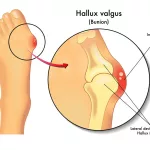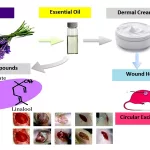Vertigo is the sensation of motion—often spinning—despite being stationary. It can feel as if your surroundings are whirling. This occurs when your sensory systems signal the brain that your body is unsteady, even though it may not be.
Depending on the underlying reason, vertigo can be provoked by turning your head, looking downward, or by another precipitating factor such as an illness.
Vertigo is a symptom rather than a standalone diagnosis. It can arise from a variety of medical issues.
Some forms of vertigo happen only once, while others recur until the root cause is identified and treated.
What can trigger vertigo?
Although multiple balance disorders can lead to vertigo, the most frequent culprit is benign paroxysmal positional vertigo (BPPV). BPPV occurs when tiny calcium crystals accumulate in the inner ear, which helps regulate balance.
Other potential causes include:
- vestibular neuritis, meaning inflammation of the vestibular nerve, commonly from a viral infection
- trauma to the head or neck
- labyrinthitis, or inflammation within the inner ear
- Meniere’s disease
- Mal de Debarquement syndrome, a rare, persistent condition that can follow passive motion such as a boat trip
- vestibular migraine
Some causes, like head or neck trauma, warrant medical evaluation, while others—such as BPPV—can often be managed at home. Vertigo stemming from an acute illness may resolve on its own with rest.
If you’re experiencing vertigo, there are self-help techniques and maneuvers that might provide relief.

Epley maneuver
Evidence indicates the Epley maneuver is effective for individuals with BPPV. You can attempt this maneuver at home by following these steps:
- Sit upright on a flat surface with a pillow supporting your head and your legs extended in front of you.
- Rotate your head 45 degrees to the right.
- Keeping your head tilted, quickly lie back so your head rests on the pillow. Remain here for at least 30 seconds.
- Slowly rotate your head 90 degrees to the left without lifting your neck.
- Turn your whole body to the left so you end up lying fully on your left side.
- Gradually return to the starting position, facing forward and sitting upright.
Someone else can assist by guiding your head through the steps. You may repeat the sequence up to three times consecutively, and brief dizziness during each movement is common.
Half-somersault maneuver
The half-somersault maneuver is another option for BPPV sufferers. Research suggests it can be as effective as the Epley maneuver and may produce less dizziness, making it easier to do alone.
To perform it, you need to know which ear contains the displaced calcium crystals. If unsure, the Dix-Hallpike test can help identify the affected side. That will determine the direction you turn for the half-somersault.
Pause after each step until the spinning sensation subsides or for about 30 seconds.
- Kneel on the floor and quickly tilt your head straight upward so you are looking at the ceiling.
- Then place your head on the floor in an inverted position as if about to somersault. Tuck your chin so the back of your head, rather than the forehead, contacts the floor.
- Slowly turn your head to face the elbow on the affected side (right or left). Keep that elbow in view and maintain this head turn for the remainder of the exercise.
- Keeping your head turned toward your elbow, swiftly raise your head to shoulder level so it forms roughly a 45-degree angle with the floor.
- Quickly lift your head to an upright stance while still turned toward the same shoulder. Hold until the vertigo eases, then slowly sit upright.
- Stay upright and rest about 15 minutes. Then tilt your head up and down. If vertigo does not recur, do not repeat the maneuver. If you still feel spinning with that motion, you may repeat the exercise.
Semont-Toupet maneuver
The Semont-Toupet maneuver is another home-based series of motions for treating vertigo. Although less commonly discussed, some patients find it helpful. It uses movements akin to the Epley maneuver but generally requires less neck flexibility.
- Begin seated on a flat surface with a pillow behind you and legs extended.
- Lie down, turn your body to the right, and look to the left side, directing your gaze upward.
- Quickly sit up and pivot to your left side, keeping your head facing left so you are now looking downward.
- Gently return to the starting position, facing forward and sitting upright.
Brandt-Daroff exercise
The Brandt-Daroff exercise is another technique you can perform by yourself, but only do it in a safe environment and not before driving, since it can temporarily increase dizziness. Studies indicate it may be less effective than the Epley maneuver but can still be beneficial for some people with BPPV.
- Sit on a flat surface with your legs hanging as they would from a chair.
- Turn your head as far to the left as possible, then lie down on your right side without moving your legs. Remain there for at least 30 seconds.
- Sit back up and return your head to the center.
- Repeat on the other side by turning your head as far right as possible, then lying on your left side.
You can perform a set of five repetitions and repeat up to three times daily, twice weekly.
Ginkgo biloba
Studies have examined ginkgo biloba for vertigo relief. It has shown promise for certain types of vertigo, including vertigo linked to plaque buildup in the brain’s arteries (cerebral arteriosclerosis).
Ginkgo biloba extract is available in liquid and capsule forms. Taking a moderate daily dose may reduce vertigo symptoms and improve balance. Consult a physician before starting ginkgo or any supplement, as it can interact with medicines like blood thinners.
Choose products that have undergone third-party verification to confirm ingredient quality and potency.
Adequate amount of sleep
Insufficient sleep can worsen some vertigo triggers, such as migraines and balance disorders. If vertigo appears for the first time, it may be related to stress or poor sleep.
A short nap might relieve symptoms. Improving sleep hygiene can also lead to more restorative sleep at night.
Stress management
Certain vertigo-related conditions, including Meniere’s disease and other disorders, may be exacerbated by stress.
Stress can also worsen secondary factors like insomnia or low-quality sleep, which may precipitate vertigo episodes.
Developing ways to manage stress can help reduce the frequency of vertigo. Techniques such as meditation and deep-breathing exercises are a good start, and some apps can assist in lowering stress and anxiety.
Chronic stress often requires more than brief relaxation exercises. If stress-reduction techniques aren’t sufficient, consider consulting a mental health professional who can teach coping strategies and help you better manage emotional responses.
Yoga and physical therapy exercises
Yoga can lower stress while improving flexibility and balance.
Vestibular rehabilitation therapy is a specialized form of physical therapy offered on an outpatient basis to train the brain to compensate for the cause of vertigo.
This therapy may benefit people whose vertigo arises from specific issues, such as:
- head injuries
- BPPV
- central nervous system lesions
Some home exercises can mimic vestibular rehabilitation. Try gentle yoga poses like Child’s Pose and Corpse Pose when dizzy, but avoid sudden forward bends, as they can temporarily worsen symptoms.
Hydration
Dehydration can sometimes trigger vertigo. Drinking water may stop vertigo caused by fluid loss.
Prevent dehydration-related vertigo by maintaining adequate daily fluid intake. A practical gauge is to keep your urine close to clear in color.
Increase fluid intake in hot or humid conditions or during activities that cause heavy sweating. Plan to drink more when you are prone to dehydration.
Vitamin D
Research suggests that low vitamin D levels can aggravate symptoms in people with BPPV. A doctor can test your vitamin D to determine if dietary changes or a supplement are needed.
You can boost vitamin D through safe sun exposure and by eating vitamin D–rich foods.
Takeaway
Vertigo is a symptom, not a definitive diagnosis, but recurrent episodes may signal an underlying issue. Home-based maneuvers and exercises can often provide relief.
If vertigo persists or recurs frequently, seek evaluation to determine the cause. A primary care provider may diagnose the problem or refer you to an ear, nose, and throat specialist or a neurologist for further assessment.


















Leave a Reply
You must be logged in to post a comment.